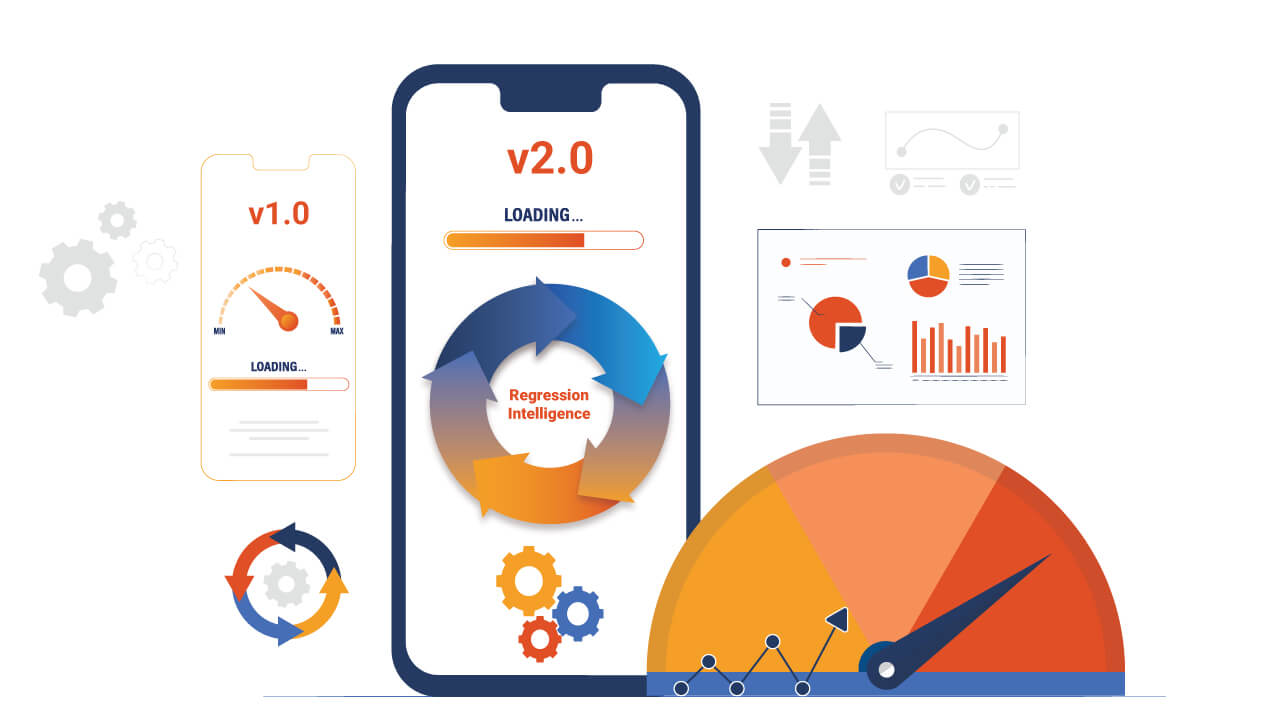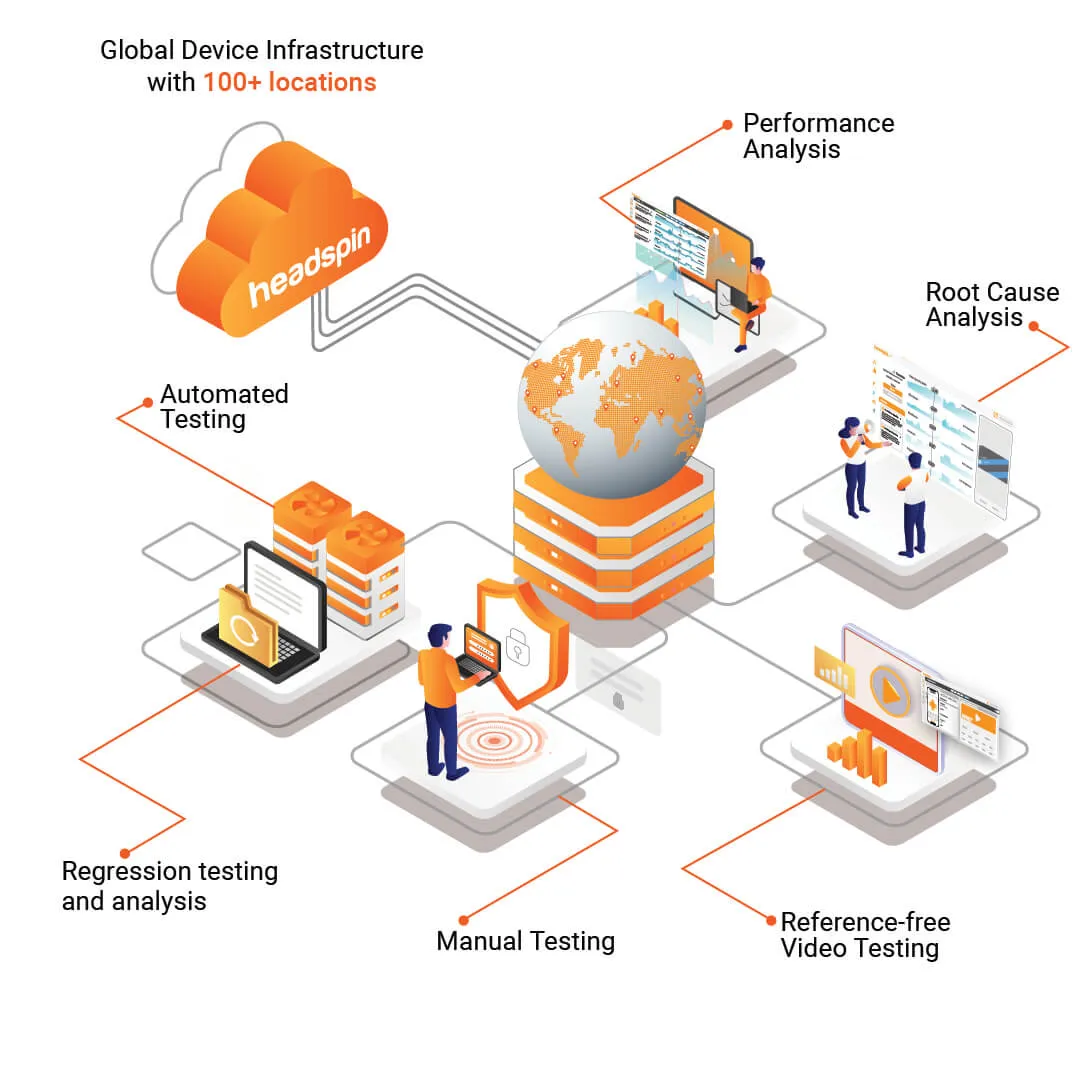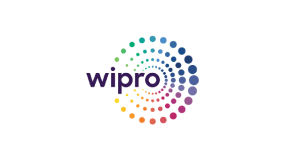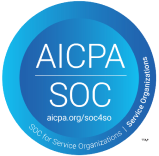Software testing is always on the move, with new trends and technologies emerging each year. As we head into 2025, businesses and professionals must stay informed about the latest testing trends to maintain competitive and efficient testing processes. This blog will explore the top testing trends expected to dominate the industry, focusing on software, automation, and end-to-end testing. But first, let's talk about testing.
Importance of Testing Software
Testing software has become a non-negotiable aspect of the software development lifecycle in today's fast-paced digital world. Here's a deeper look into why it holds such paramount importance:
Quality Assurance
Quality assurance (QA) is at the heart of software testing. It ensures that the software meets requirements and functions well. By rigorously testing the software, QA processes can identify bugs and issues early, preventing them from reaching the end users. This not only enhances the quality of the software but also fosters a positive reputation for the developers and the organization behind it.
Security
Security breaches can have devastating effects on both users and businesses. Testing software for vulnerabilities is essential to safeguard against potential threats. Comprehensive security testing involves penetration testing, vulnerability scanning, and risk assessment to uncover and fix security gaps. This approach helps save sensitive data and maintain user trust, which is particularly crucial in the finance, healthcare, and e-commerce sectors.
User Satisfaction
The ultimate goal of any software product is to provide a seamless and satisfying user experience. Poorly tested software can lead to crashes, glitches, and other issues that frustrate users. Ensuring the software is thoroughly tested helps create a smooth, intuitive, and reliable user experience, increasing user satisfaction and loyalty.
Cost Efficiency
One of the most significant benefits of thorough software testing is cost efficiency. Fixing bugs and issues discovered late in the development process, or worse, post-deployment, can be exceedingly costly. Early detection through testing allows issues to be addressed when they are simpler and cheaper to fix. This saves money, time, and resources, which can be better utilized to improve the product further.
Compliance and Standards
Many industries have stringent regulatory requirements and standards that software products must comply with. Testing ensures the software adheres to these regulations, avoiding legal repercussions and fines. Compliance testing checks for adherence to industry standards, regulatory guidelines, and best practices, ensuring the software is fit for its intended use.
Enhanced Performance
Performance testing assesses the software's performance under various conditions, including peak usage times. By conducting performance testing, developers can ensure that the software is scalable, reliable, and capable of handling high loads without compromising speed or functionality. This is particularly important for applications expected to serve many users simultaneously.
Why Leverage Software Testing Tools
Incorporating software testing tools into the development process significantly enhances the efficiency and effectiveness of testing. These tools streamline workflows, automate repetitive tasks, and provide valuable software performance insights. Here's why leveraging software testing tools is a game-changer:
- Automation: Automation testing tools execute tests quickly and accurately, saving time and reducing human error. By automating repetitive test cases, developers can focus on more complex scenarios, enhancing overall productivity and ensuring comprehensive test coverage.
- Coverage: Advanced software testing tools ensure comprehensive test coverage, including edge cases that might be overlooked in manual testing. They allow the simulation of various user environments and conditions, ensuring the software performs well under different scenarios.
- Performance Analysis: Performance testing tools measure application speed, scalability, and stability under various conditions. These tools help identify bottlenecks and performance issues that could impact the user experience, allowing for optimization before the software is released.
- Continuous Integration: Tools that integrate with Continuous Integration/Continuous Deployment (CI/CD) pipelines facilitate continuous testing, ensuring immediate feedback and rapid iterations. This integration helps maintain high software quality throughout the development process by catching issues early and enabling quick fixes.
- Collaboration and Reporting: Modern software testing tools often have collaboration features and detailed reporting capabilities. These features enable better communication among team members, provide transparency into the testing process, and allow for informed decision-making based on real-time data.
Uncovering the Top Testing Trends of 2025
2025 ushers in a transformative era in software testing. The leading trends—powered by AI, automation, and seamless DevOps—are reshaping how quality is ensured across the development lifecycle.
1. Codeless (Low-/No-Code) Testing
Low-code and no-code platforms empower non-technical stakeholders to build and maintain tests visually. These tools use drag‑and‑drop UIs to construct automation flows, reducing the need for specialized scripting and increasing stakeholder participation.
2. Self‑Healing Tests
Self-healing frameworks leverage AI/ML to adapt to UI changes by detecting failed element selectors and automatically updating them. This dramatically reduces flaky tests and maintenance overhead—often by as much as 40–70%.
3. Hyperautomation
This trend integrates AI, RPA, and advanced automation to capture, build, and execute testing pipelines end‑to‑end. Features include script generation, automated data preparation, defect triage, and self‑healing—all orchestrated to enable end‑to‑end autonomy.
4. QAOps
QAOps moves testing into the heart of the CI/CD pipeline, aligning QA with DevOps and SRE principles. It promotes shared responsibility for quality, with continuous integration and delivery of automated tests—thereby accelerating deployments and enhancing reliability.
5. Domain‑Specific (Vertical) Test Suites
Domain-specific testing tailors automation to the unique business logic and regulatory needs across various fields, including finance, healthcare, and IoT. These specialized suites combine generic frameworks with domain-specific libraries to strike a balance between reuse and compliance.
6. Evolution of Test Frameworks
Modern frameworks are evolving to embrace:
- Agentic AI automation, featuring self-driving test agents that orchestrate execution and healing.
- Containerized test environments, improving scalability in CI pipelines.
- Feature-rich, scriptless frameworks (e.g., Cucumber BDD + Java) that bolster maintainability, readability, and collaboration.
How to Succeed with Automation Testing in 2025
Here’s a roadmap to thrive in the next-gen testing landscape:
- Adopt a QAOps Mindset: Integrate QA deeply with CI/CD—breaking down silos between QA, dev, and ops. Drive shared ownership of quality, using real-time dashboards, feedback loops, and test orchestration to detect issues early and often.
- Leverage Low-Code & Codeless Tools: Empower product owners and UAT leads to build tests using intuitive UIs. This expands testing ownership, lightens developer workloads, and accelerates feedback in agile cycles.
- Incorporate Self‑Healing in Pipelines: Add self-healing capabilities via tools like Mabl, Testim, or Applitools. This improves test resilience in fast‑changing UIs and reduces flaky failures.
- Build Hyperautomation Capabilities: Combine AI-based test generation, data orchestration, and RPA into unified pipelines. Automate repetitive tasks, like test data setup or environment cleanup, so teams stay focused on coverage and quality.
- Specialize via Domain‑Specific Suites: Develop reusable test libraries tailored to your industry’s needs, mapping regulatory workflows, UI patterns, or API models. This boosts efficiency and consistency across product lines.
How HeadSpin Helps with Mobile App Testing
HeadSpin has emerged as a pivotal tool in mobile app testing, addressing developers' unique challenges when ensuring their applications perform flawlessly across various devices, networks, and operating systems. Here's an in-depth look at how HeadSpin enhances the mobile app testing process:
Real Device Testing
One of HeadSpin's standout features is its access to thousands of real devices around the globe. Unlike emulators, which can only approximate real-world conditions, testing on actual devices ensures that apps function correctly on real users' hardware and software configurations. This diversity is crucial for identifying and resolving issues related to device-specific behaviors, network conditions, and regional differences.
- Global Device Access: HeadSpin's platform provides access to devices in various geographic locations, allowing testers to simulate and analyze performance in different network environments.
- Accurate Results: Real device testing yields more reliable and actionable data, helping teams to pinpoint and fix issues that emulators would miss.
AI-Powered Insights
HeadSpin leverages artificial intelligence to deliver deep insights into performance issues. By analyzing data, the platform can identify patterns that human testers can't spot easily.
- Automated Analysis: AI-driven analytics streamline the process of identifying performance bottlenecks, usability issues, and potential areas for optimization.
- Predictive Insights: The AI algorithms can predict potential problems before they escalate, allowing developers to address them proactively.
Seamless Integration with CI/CD Pipelines
CI/CD is vital to modern software development. HeadSpin integrates seamlessly with popular CI/CD tools, ensuring that testing is integral to the development cycle.
- Automated Testing: By incorporating automated tests into the CI/CD pipeline, developers can receive immediate feedback on code changes, facilitating faster iterations and higher quality releases.
- Continuous Monitoring: HeadSpin supports continuous monitoring, ensuring that applications remain performant and reliable even after deployment.
End-to-End Testing Capabilities
HeadSpin excels in end-to-end testing, which is essential for validating the entire workflow of a mobile application. This comprehensive approach ensures that all integrated components function correctly and cohesively, providing a seamless user experience.
- Comprehensive Scenarios: Test cases can be designed to cover a wide range of user scenarios, from basic functionalities to complex interactions.
- Real-World Conditions: By testing under real-world conditions, HeadSpin ensures that applications perform well in the hands of users, regardless of their location or network conditions.
Final Thoughts
As we move into 2025, staying abreast of the top testing trends is essential for maintaining a competitive edge in the software industry. By embracing advancements in AI and ML, automation testing, end-to-end testing, and more, organizations can enhance their testing strategies and deliver high-quality software. Remember these trends as you refine your testing processes and prepare for the future.
FAQs
Q1. Why is automation testing important in the current software development landscape?
Ans: Automation testing is crucial because it increases efficiency, reduces human error, ensures thorough coverage, and supports continuous testing, making it indispensable in modern software development.
Q2. How does continuous testing differ from traditional testing?
Ans: Continuous testing involves integrating testing processes into every stage of the development cycle, ensuring immediate feedback and rapid resolution of issues, unlike traditional testing, which typically occurs at specific stages.
Q3. Can software testing tools integrate with existing development workflows?
Ans: Yes, many software testing tools are designed to integrate seamlessly with existing development workflows, including CI/CD pipelines, enhancing overall productivity and quality assurance.



























.png)













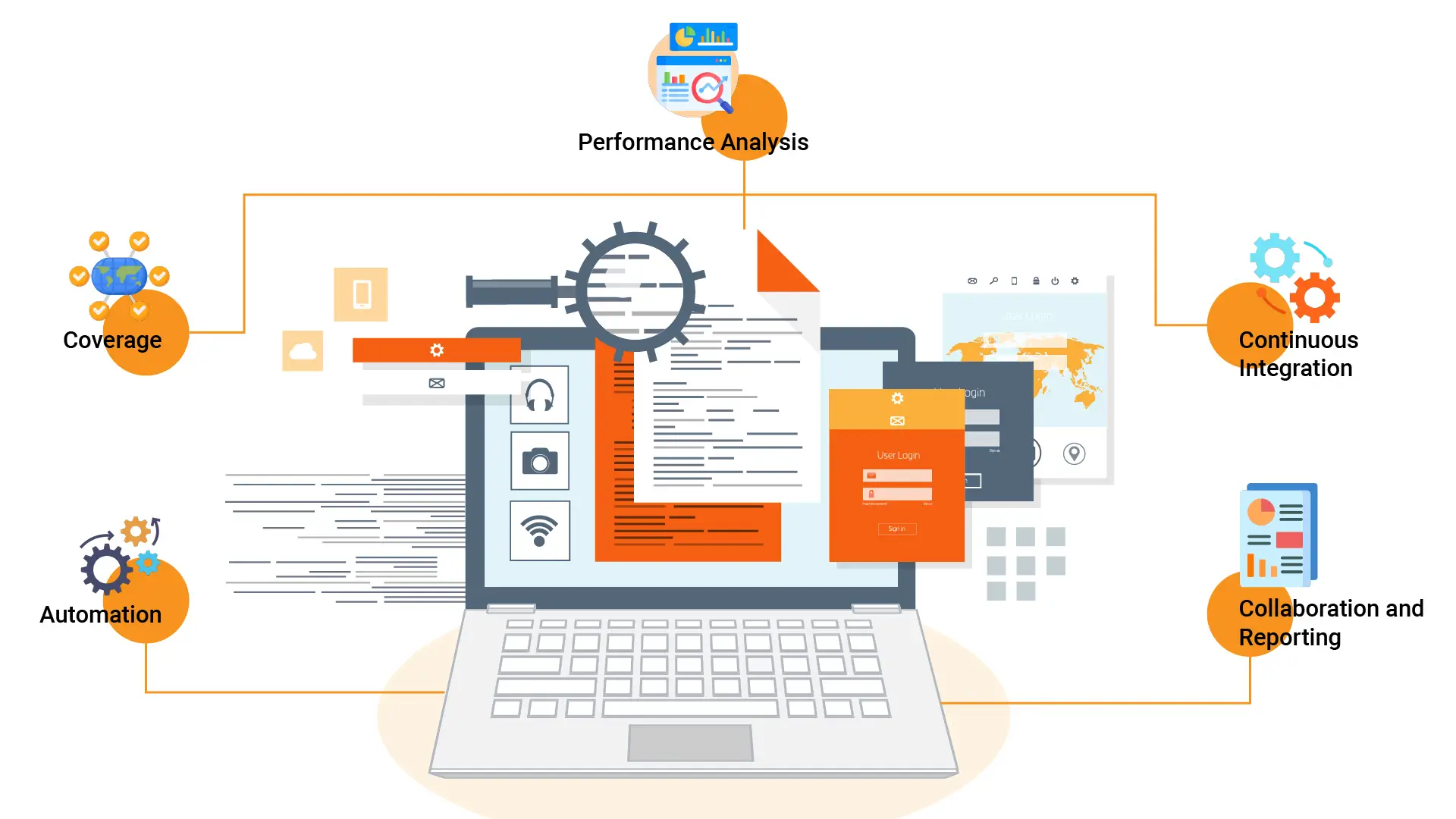





-1280X720-Final-2.jpg)

